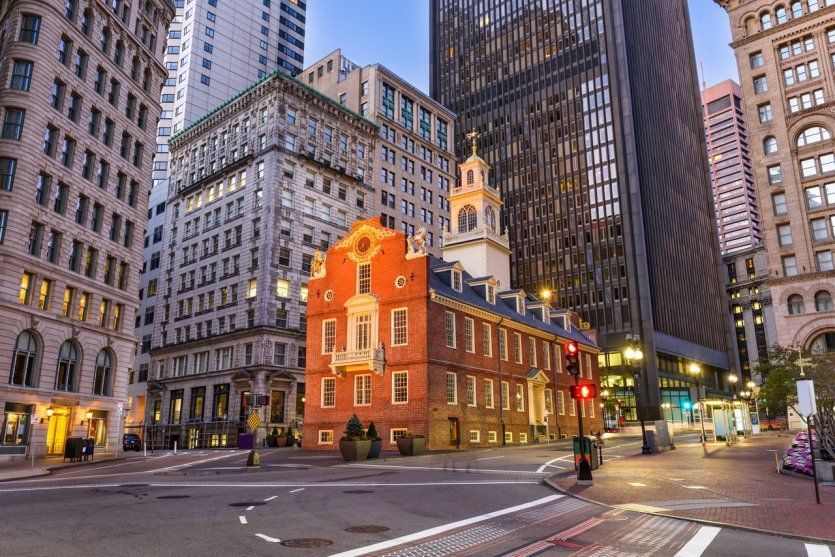
Widely adopted,
early adaptor, Massachusetts leads the way since 2009
Massachusetts
The Massachusetts Residential Stretch Energy Code has been available since late 2009 and has already been widely adopted by many cities and towns in Massachusetts.
Taking effect on January 1, 2023, this energy code is based on modified versions of the 2021 code books as published by the International Code Council (ICC). The code addresses a comprehensive, wide range of measures including the following pertaining to building envelopes.
Foremost is the Universal Requirement for Triple Glazing All transparent glass used must possess a maximum whole assembly U-factor (insulative value) of 0.25. Although achieving U-factors around 0.25 is technically possible with certain double-glazed glass, the updated code mandates factoring in the window's framing and other elements. The insulating properties of metal framing negatively impact the window's overall insulation quality, driving up the U-factor. Consequently, meeting the whole-assembly 0.25 U-factor with double-glazed windows becomes virtually unattainable, making triple glazing a necessity.
Another consideration is the now mandatory electrification for buildings with more than 50% "glazed wall systems" (including both vision glass and/or spandrel sections), full electrification for space heating becomes compulsory. In other words, if you intend to construct a curtainwall building, employing fossil fuels for space heating or ventilation air heating is prohibited. However, there is an exception for high-ventilation buildings (defined as those with average ventilation exceeding 0.5 cfm/sf). Such buildings as labs and hospitals, must use electric systems to fulfill 25% of the peak space heating and ventilation air heating load.
Compulsory Air Infiltration Testing Formerly an optional measure to enhance efficiency, air infiltration testing is now obligatory. All newly constructed commercial buildings must undergo field testing to ensure they do not exceed the maximum permissible air leakage rates. The updated code stipulates that buildings over 50, 000 square feet may conduct testing on representative sections of the structure. However, the following areas must be tested:
i. The entire thermal envelope area of stories with any conditioned spaces directly beneath a roof.
ii. The entire thermal envelope area of stories featuring a building entrance, a floor over unconditioned space, a loading dock, or those situated below grade.
iii. Representative above-grade portions of the building, encompassing no less than 25 percent of the wall area enclosing the remaining conditioned space.
New Residential Construction: A continuous air barrier shall be installed in the building envelope. Breaks or joints in the air barrier shall be sealed. All insulation shall be installed at Grade I quality in accordance with ICC/RESNET 301. Air-permeable insulation shall not be used as a sealing material.
Existing buildings: Offices, residential, and schools over 20,000-sf are required to use a new Thermal Energy Demand Intensity (TEDI) Pathway. The updated Stretch Code sets forth specific TEDI limits by building type. This uses the same energy software tools as the current ASHRAE 90.1 Appendix G pathway but with significantly more focus on heating, cooling and the building envelope. Pathways to compliance offered also for high ventilation buildings such as labs and hospitals, Multi-family buildings and Small commercial buildings.
Alterations: The updated Stretch Code will require that any altered walls be brought up to prescriptive stretch code, although historic buildings remain exempt from these provisions.
All compliance pathways under the Specialized Code are designed to ensure new construction that is consistent with a net-zero Massachusetts economy in 2050, primarily through deep energy efficiency, reduced heating loads, and efficient electrification.
The Specialized Code adopts a definition of Net-zero Building as follows: A building which is consistent with achievement of MA 2050 net zero emissions, through a combination of highly energy efficient design together with being an all-electric or Zero Energy Building, or where fossil fuels are utilized, a building fully pre-wired for future electrification and that generates solar power on-site from the available Potential Solar Zone Area.
Cities and towns require an active vote by City council or Town meeting to opt-in to the Specialized Code. A six month phase-in period, utilized by new Stretch Code municipalities, allows an orderly transition for developers, designers and builders as well as additional training time for municipal code officials.
The Stretch Code Update eliminates various loopholes that previously permitted tradeoffs in building design regarding energy efficiency and represents a bold stride towards achieving energy and emissions reductions.